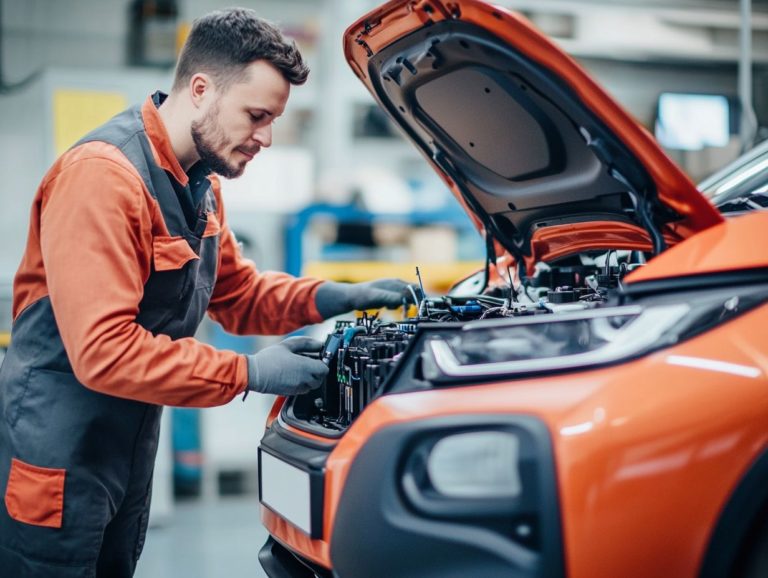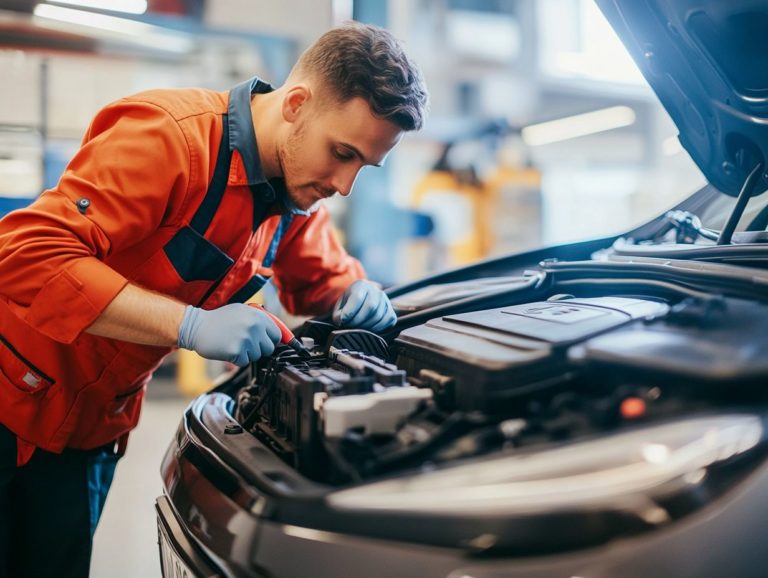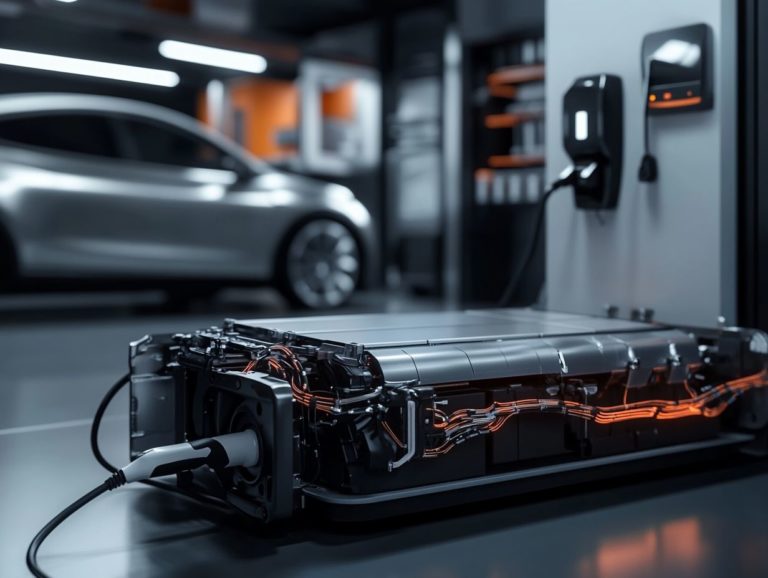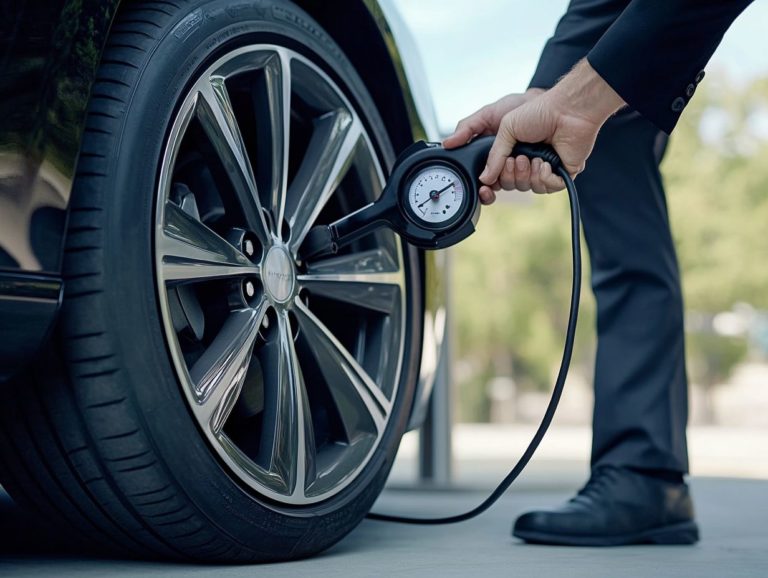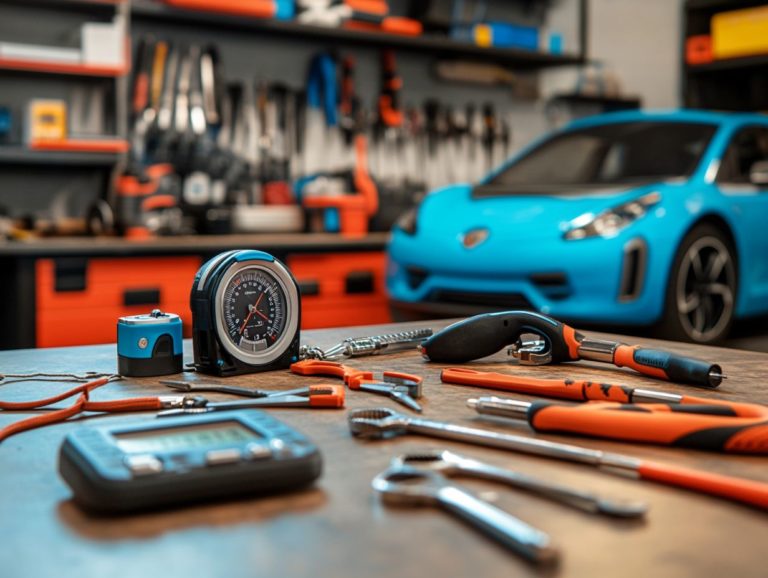Maintaining Your EV’s Cooling System
As electric vehicles (EVs) become more popular, it’s essential for you to grasp the intricacies of their cooling systems. Understanding these systems is key to ensuring you get the best performance from your vehicle and extend its lifespan.
This article delves into the vital components of your EV’s cooling system, pointing out common signs that may indicate potential issues and offering practical maintenance tips.
Whether you prefer tackling maintenance yourself or seeking professional assistance, knowing how to troubleshoot and maintain your cooling system is crucial for keeping your EV running smoothly. Let s explore how you can keep your ride cool and performing at its best!
Contents
- Key Takeaways:
- The Importance of Maintaining Your EV’s Cooling System
- Understanding Your EV’s Cooling System
- Signs of Cooling System Issues
- How to Maintain Your EV’s Cooling System
- DIY vs Professional Maintenance
- Troubleshooting Cooling System Problems
- Frequently Asked Questions
- What is the purpose of maintaining your EV s cooling system?
- How often should I maintain my EV s cooling system?
- What are some signs that my EV s cooling system needs maintenance?
- Can I maintain my EV s cooling system myself?
- What should I do if my EV s cooling system needs repairs?
- Is maintaining my EV s cooling system expensive?
Key Takeaways:
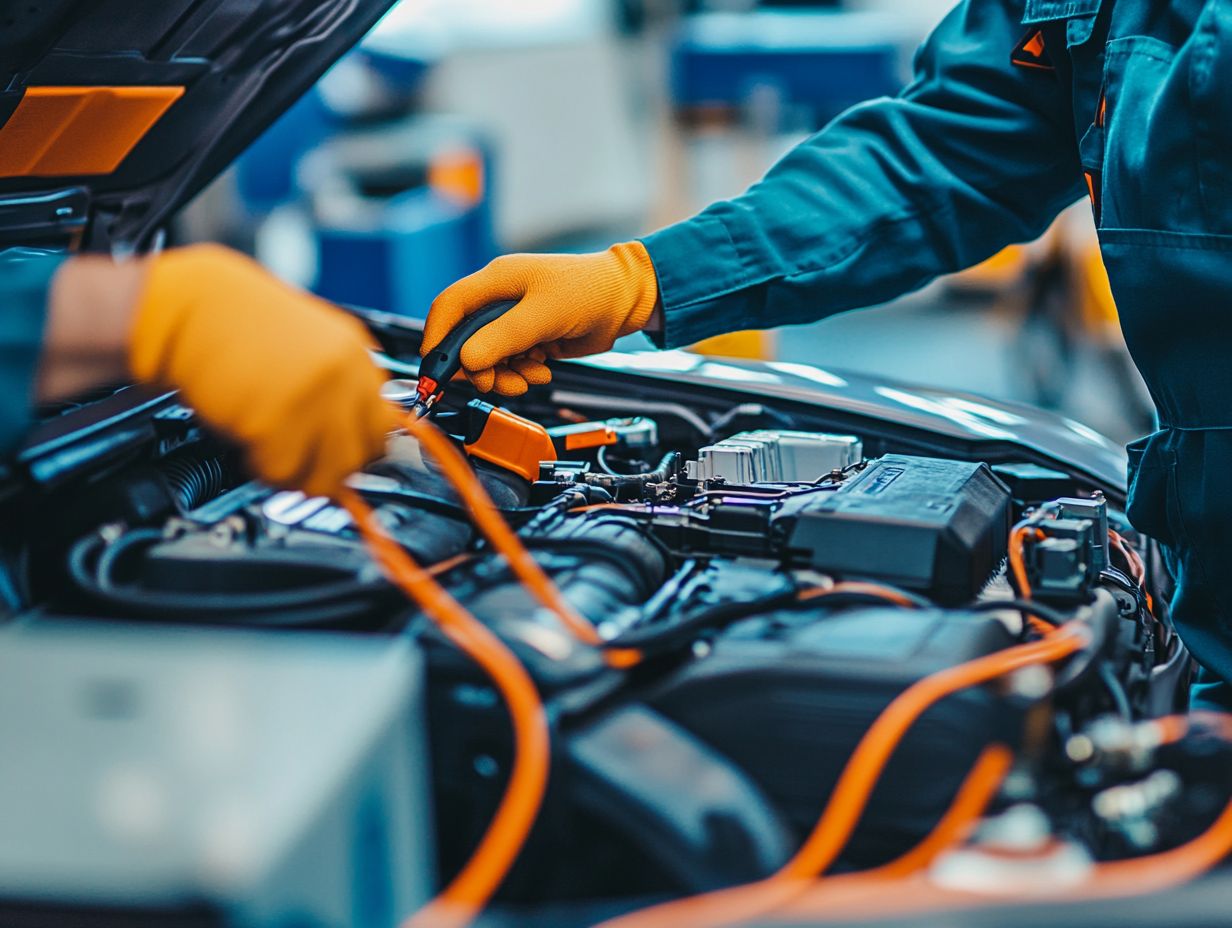
- Proper maintenance of your EV’s cooling system is crucial for its overall performance and longevity.
- Regular inspections and maintenance tasks can help identify and prevent potential cooling system issues.
- Seeking professional help for more complex cooling system problems can save time and prevent further damage.
The Importance of Maintaining Your EV’s Cooling System
Maintaining the cooling system of your electric vehicle (EV) is essential. It ensures optimal performance, extends battery life, and prevents overheating, making it important to learn about understanding EV cooling systems.
The cooling system plays a pivotal role in how heat is managed, regulating the temperature of the batteries that power your EV and high-voltage systems.
Neglecting proper upkeep can result in battery degradation, diminished power output, and potential safety hazards. This underscores the importance of regular inspections and maintenance tasks. It’s important to understand coolant efficiency and safety standards for both automotive technicians and EV owners.
Why Proper Maintenance is Necessary
Properly maintaining your EV’s cooling system is crucial for preventing overheating and ensuring energy efficiency. For more tips on this topic, check out maintaining your EV’s performance in summer, as it helps maintain optimal performance and extends battery life.
Neglecting this vital aspect can lead to serious repercussions, such as battery degradation and potential coolant leaks that could compromise your vehicle’s functionality. Regular inspections and fluid checks are essential for keeping the cooling system operating smoothly.
Consider these key tasks:
- Replacing coolant at the recommended intervals
- Tightening hoses
- Checking for leaks
These actions significantly contribute to your vehicle’s overall performance. By consistently performing these maintenance tasks, you not only enhance the longevity of your battery but also safeguard against the various risks associated with an overheating engine, ultimately promoting reliability and safety on the road.
Understanding Your EV’s Cooling System
Understanding the cooling system of your electric vehicle (EV) is crucial for effective thermal management. It significantly influences both the performance and longevity of the battery packs.
Components and Functions
The cooling system of your electric vehicle is a sophisticated assembly of components, each playing a crucial role in heat transfer and regulating battery temperature to elevate overall performance.
At the core of this intricate system lies the coolant fluid, carefully chosen for its exceptional properties that help move heat away from the battery. Complementing this are the heat exchangers, which efficiently transfer thermal energy between the coolant and the battery, ensuring optimal operating conditions.
Sensors diligently monitor temperature fluctuations, supplying real-time data to the control unit for precise adjustments. Together, these components function in unison, crafting an effective thermal management solution that not only safeguards the battery but also maximizes efficiency and performance, ultimately enhancing the longevity of your vehicle.
Signs of Cooling System Issues
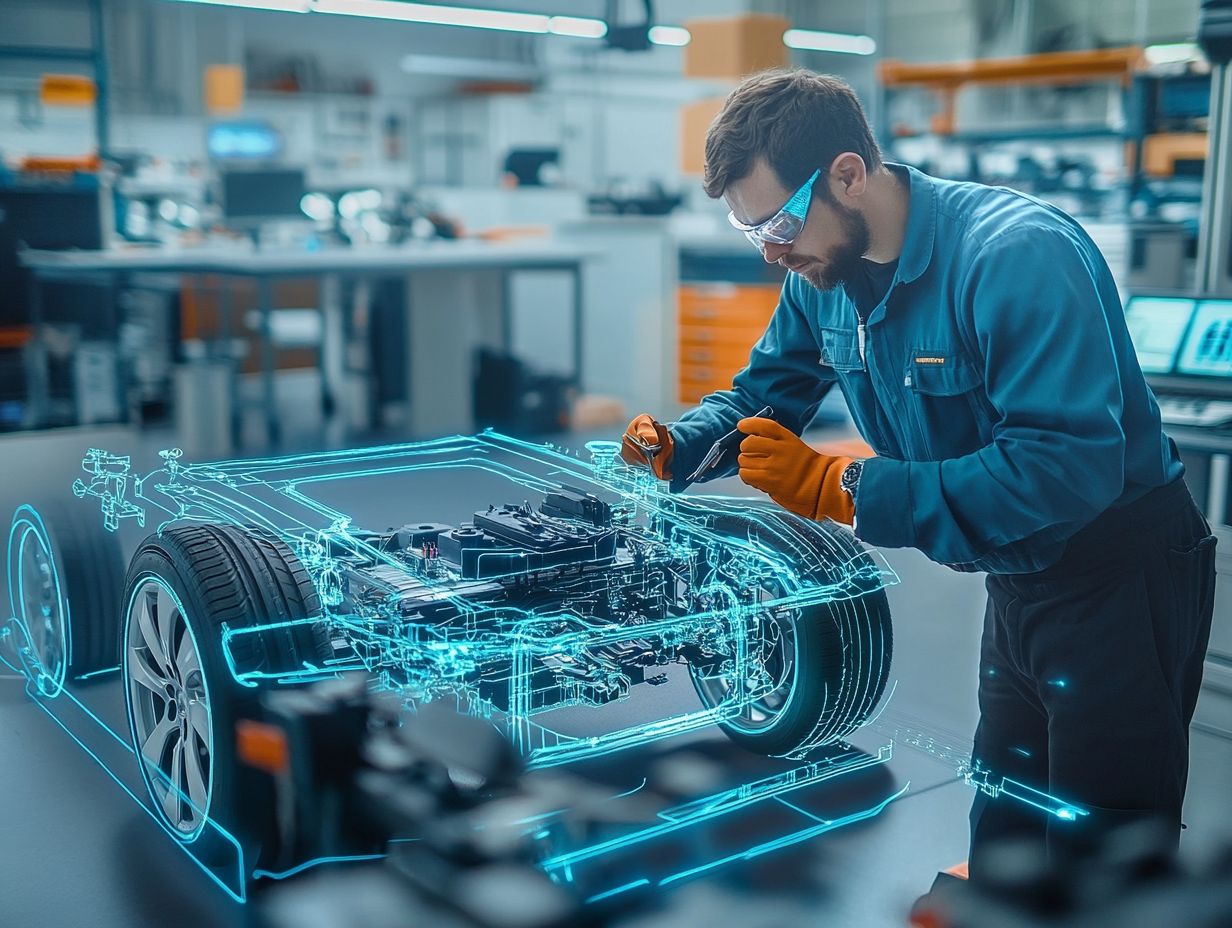
Spotting signs of cooling system issues in your EV is crucial. It helps you act quickly to prevent damage, ensuring that your battery maintains its optimum temperature and functionality.
Common Warning Signs
Common warning signs of cooling system issues include coolant leaks, fluctuating battery temperature, and decreased performance. Each one signals that immediate maintenance is necessary.
Coolant leaks often make their presence known through puddles forming beneath your vehicle, typically in bright green, orange, or pink hues. These colors can indicate that it s time for hose repairs or even a radiator replacement.
Fluctuating battery temperature can show up as inconsistent engine performance, with gauges dancing around unexpectedly, hinting at potential battery deterioration or faulty connections.
When performance decreases, you might feel your vehicle struggling to accelerate or maintain speed. This is a clear sign that you could be dealing with overheating or a compromised cooling system.
To effectively monitor these signs, regularly check your fluid levels, inspect hoses and connections for wear, and stay alert for any unusual sounds or smells.
Don t wait! If you spot any of these signs, call an automotive technician right away. Addressing them early can prevent more severe damage and keep your vehicle running smoothly.
How to Maintain Your EV’s Cooling System
To guarantee the longevity and efficiency of your electric vehicle’s cooling system, you should regularly check for issues and perform maintenance. This diligence will help you maintain optimal coolant fluid levels and ensure peak cooling performance.
Regular Inspections and Maintenance Tasks
Regular inspections are essential for ensuring your coolant fluid levels are optimal and that your battery temperature stays within the ideal range for peak performance.
- Check the coolant reservoir, comparing the level against the marked indicators. The coolant reservoir is the tank that holds the fluid that cools your engine.
- Look for any signs of leaks or discoloration, as these might signal potential issues.
- For battery packs, use a temperature gauge to confirm they are operating within the recommended temperature range usually between 20 C and 25 C or 68 F to 77 F.
Consistent monitoring is key to preventing overheating, which can hinder performance and lead to expensive repairs.
By prioritizing these routine checks, you can significantly enhance both the longevity of your systems and the overall efficiency of your vehicle.
DIY vs Professional Maintenance
When it comes to maintaining your electric vehicle’s cooling system, understanding the advantages and risks of DIY maintenance versus seeking professional assistance is crucial for optimal care.
Knowing these factors empowers you to make informed decisions that best suit your needs.
Benefits and Risks of Each Option
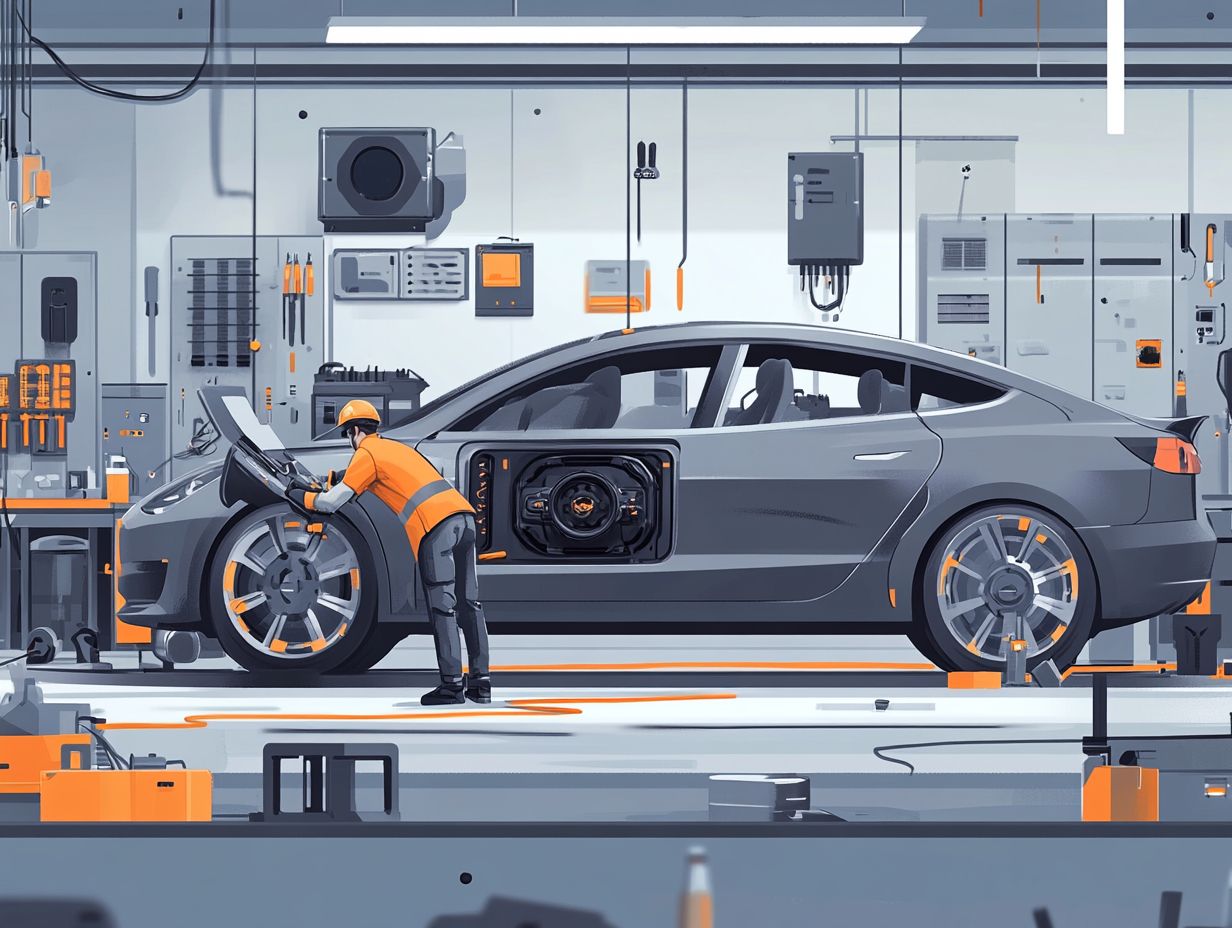
Both DIY and professional maintenance come with their own set of advantages and drawbacks. It’s crucial for you to evaluate your skills alongside the specific requirements of your EV’s cooling system.
Taking on a cooling system issue yourself can be a great way to save money and feel a gratifying sense of accomplishment. However, it requires a certain level of technical prowess and comfort with tools. Even the smallest missteps can lead to significant repercussions, such as vehicle damage or environmental hazards.
On the other hand, opting for professional automotive technicians ensures your cooling system is in the hands of someone well-versed in the latest technology and safety regulations. Their expertise can help you avoid costly mistakes, though this added assurance often comes with a steeper price tag.
Weighing the pros and cons of each approach is essential for you to make decisions that align best with your unique circumstances.
Troubleshooting Cooling System Problems
When troubleshooting cooling system problems in your electric vehicle, it’s essential to identify issues early. Look out for signs like coolant leaks or abnormal temperature readings.
Addressing these concerns promptly will help prevent performance degradation and ensure the longevity of your battery.
Stay proactive and check your vehicle regularly to avoid costly repairs!
Identifying and Addressing Issues
Identifying and addressing cooling system issues promptly like coolant leaks and irregular battery temperatures is essential for maintaining the efficiency and functionality of your electric vehicle.
Routine inspections can uncover potential problems before they lead to costly repairs. This ensures your system operates at peak performance. A quick check of hoses and fittings for wear or leaks can catch issues early.
Monitor battery temperature closely. Overheating can damage the battery and reduce its performance. Regular maintenance, including changing the coolant and cleaning the system, keeps your components clean and in top shape.
These proactive measures extend your cooling system’s lifespan and improve your vehicle’s performance, providing you with a smoother, more enjoyable driving experience.
Watch this video to learn more about maintaining your EV s cooling system.
Frequently Asked Questions
What is the purpose of maintaining your EV s cooling system?
Maintaining your EV s cooling system is essential for ensuring the proper functioning of your vehicle s battery and motor. The cooling system is responsible for keeping these components at a safe operating temperature, which directly impacts their performance and longevity.
How often should I maintain my EV s cooling system?
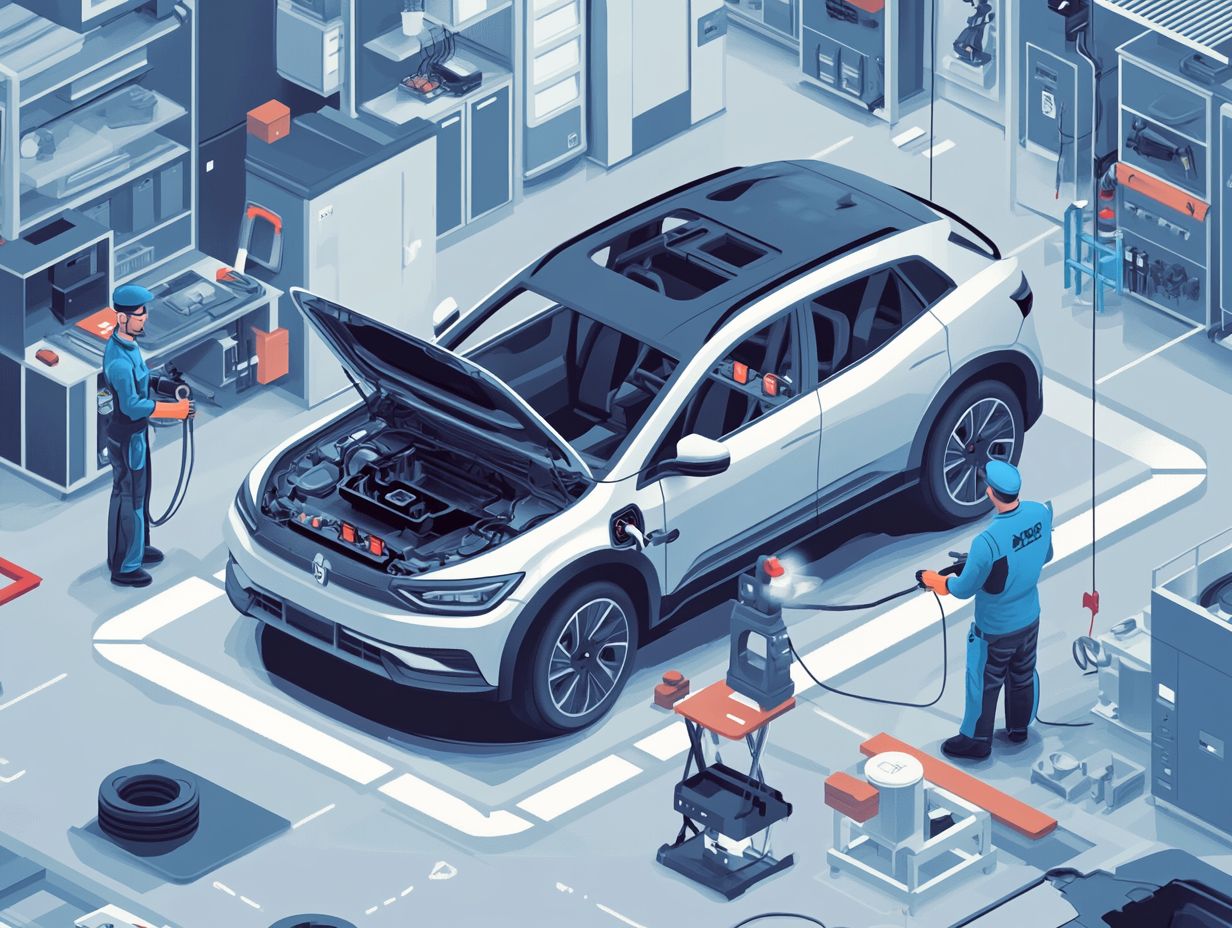
It is recommended to have your EV s cooling system checked and maintained at least once a year. However, if you notice any unusual changes in your vehicle s performance or cooling system, it is best to have it looked at by a professional technician.
What are some signs that my EV s cooling system needs maintenance?
Some common signs that your EV s cooling system may need maintenance include strange noises or smells coming from the cooling system, decreased battery range, or warning lights on your dashboard. If you experience any of these, don t wait! Get your cooling system checked right away to avoid bigger problems.
Can I maintain my EV s cooling system myself?
While there are some basic tasks that you can do to maintain your EV s cooling system, it is best to leave the more complex maintenance to a trained technician. They have the knowledge and equipment to properly diagnose and address any issues with your cooling system.
What should I do if my EV s cooling system needs repairs?
If your EV s cooling system needs repairs, it is best to bring it to a certified service center or dealership. They will have the necessary parts and expertise to properly repair your cooling system and ensure that it is functioning correctly.
Is maintaining my EV s cooling system expensive?
The cost of maintaining your EV s cooling system will vary depending on the type of maintenance needed and the specific make and model of your vehicle. However, investing in regular maintenance can help prevent more costly repairs down the line and ensure the optimal performance of your EV.

